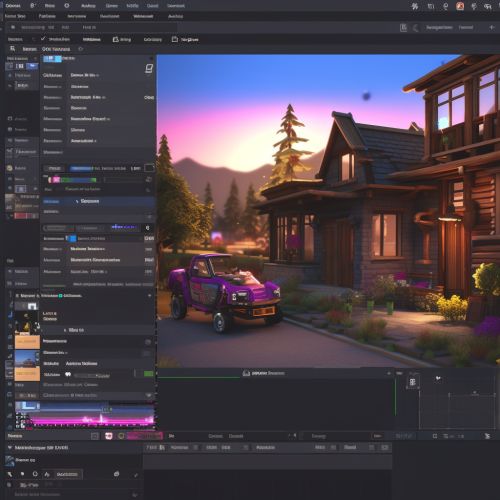Integrated Development Environment
Introduction
An Integrated Development Environment (IDE) is a software application that provides comprehensive facilities to computer programmers for software development. An IDE normally consists of a source code editor, build automation tools, and a debugger. Most modern IDEs have intelligent code completion.
Overview
Some IDEs, such as NetBeans and Eclipse, contain the necessary compiler, interpreter, or both; others, such as SharpDevelop and Lazarus, do not. The boundary between an integrated development environment and other parts of the broader software development environment is not well-defined. Sometimes a version control system, or various tools to simplify the construction of a GUI, are integrated. Many modern IDEs also have a class browser, an object browser, and a class hierarchy diagram, for use in object-oriented software development.


Features
IDEs are designed to maximize programmer productivity by providing tightly-knit components with similar user interfaces. This can be achieved by the following:
Source code editor
A source code editor is a text editor program designed for editing source code of computer programs. It may be a standalone application, or it may be built into an IDE or web browser. Source code editors are the most fundamental programming tool, as the fundamental job of programmers is to write and edit source code.
Build automation tools
Build automation is the process of automating the creation of a software build and the associated processes including: compiling computer source code into binary code, packaging binary code, and running automated tests.
Debugger
A debugger or debugging tool is a computer program that is used to test and debug other programs (the "target" program). The code to be examined might alternatively be running on an instruction set simulator (ISS), a technique that allows great power in its ability to halt when specific conditions are encountered, but which will typically be somewhat slower than executing the code directly on the appropriate (or the same) processor. Some debuggers offer two modes of operation, full or partial simulation, to limit this impact.
Version control
A version control system (also known as revision control, source control, or source code management) is a class of systems responsible for managing changes to computer programs, documents, large web sites, or other collections of information. Version control is a way to keep a track of the changes in the code so that if something goes wrong, we can make comparisons in different code versions and revert to any previous version that we want.
Integrated documentation
Most IDEs provide integrated documentation in the form of tooltips, which are small windows that pop up when the mouse pointer hovers over a function or method call in the code editor. This can be very helpful for programmers who are not familiar with a particular library or API.
Types of IDEs
There are several types of IDEs, each offering different features and benefits. Some of the most popular include:
Web-based IDEs
Web-based IDEs run directly in a web browser, allowing developers to work on projects from any location with internet access. These IDEs often offer features such as live collaboration, auto-complete, and the ability to run, debug, and deploy code all from the browser.
Mobile IDEs
Mobile IDEs are designed for developing mobile applications. They often include features such as emulators for testing mobile applications, as well as tools for building and deploying applications to various mobile platforms.
Cloud-based IDEs
Cloud-based IDEs are similar to web-based IDEs, but they run in the cloud, rather than in a local browser. This allows developers to access their projects from any device, and often includes features such as collaboration tools, version control, and deployment options.
Examples of IDEs
There are many different IDEs available, each with its own strengths and weaknesses. Some of the most popular include:
- Eclipse: An open-source IDE that supports a wide variety of programming languages. It is highly customizable and has a large community of users and developers.
- NetBeans: Another open-source IDE that supports a wide variety of programming languages. It is known for its strong support of Java.
- Visual Studio: A proprietary IDE from Microsoft. It supports a variety of languages, but is most commonly used for C# and .NET development.
- IntelliJ IDEA: A proprietary IDE from JetBrains. It is known for its strong support of Java, as well as its intelligent code analysis and refactoring tools.
- Xcode: A proprietary IDE from Apple. It is used for developing applications for iOS and macOS.
See Also
- Source code editor - Debugger - Version control - Build automation - Web-based IDE - Mobile IDE - Cloud-based IDE
